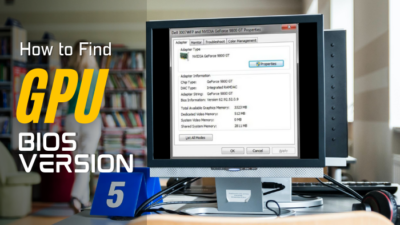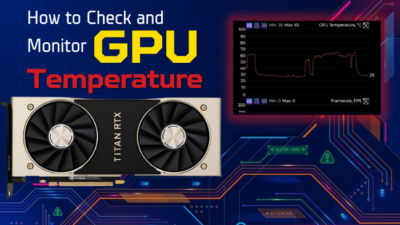Hardware Accelerated GPU Scheduling or HAGS is a relatively new feature introduced in Windows. It is something that will make your games perform better with future GPU driver updates and optimizations made by game developers.
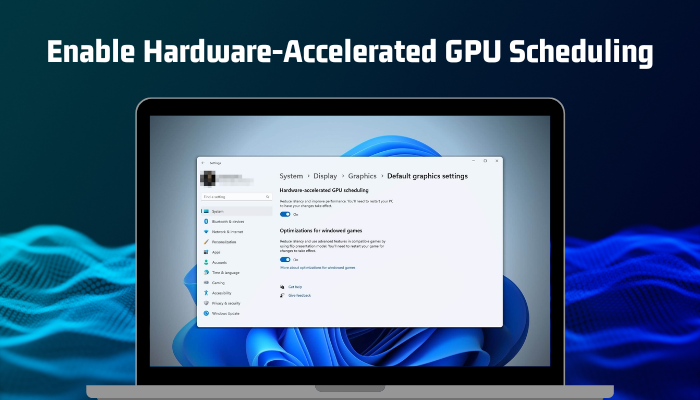
You can easily enable it from the settings on both Windows 10 and 11. In case you didn’t know, I will show you how you can enable this.
So, let’s take a look.
What is Hardware Accelerated GPU Scheduling?
Introduced with Windows 10 version 2004, HAGS aims to cut down CPU workload by offloading the frame generation instructions to the GPU.
Typically the graphics card is responsible for generating the graphical elements of games and applications. But the processor sends the instruction to the GPU about what frame to generate and when.
A batch exists where all the instructions are present and are sent to the graphics card. With longer batches, that’s when you experience latency.
With HAGS, the frame scheduling is handed over directly to the graphics card. That way, the instructions do not need to travel an extra path from the CPU to the GPU. It should decrease the overall latency and improve your gaming experience.
Using this feature, Microsoft wants to change how future games communicate with the GPU. Right now you won’t see massive gains in games, but that will change in the future with game updates.
Read more on can a brand new GPU Artifacting.
How to Enable Hardware Accelerated GPU Scheduling
To enable hardware-accelerated GPU scheduling, go to the Graphics option inside the Windows Settings and toggle it on. Alternatively, you can change a registry entry to do that too.
Let’s look at how you can do this.
Here are the methods to enable Hardware Accelerated GPU Scheduling:
1. Use Windows Settings
The Display Settings on Windows has a dedicated option where you can turn the hardware-based GPU scheduler on or off. This is especially helpful in cases where you experience frame drops in games and want to go back to the original settings. Just turn the toggle on or off and you wouldn’t even need a restart.
This option is present on both Windows 10 and 11.
On Windows 10
- Press Windows + I to open Settings. You can also press the Settings icon on the quick navigation panel or search for Settings from the Start Menu.
- Press on Display from the left and scroll down and click on Graphics Settings.
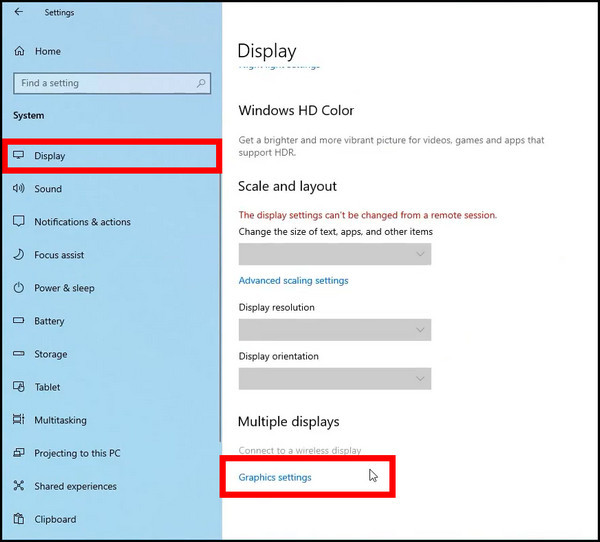
- Turn the toggle to on under Hardware-accelerated GPU scheduling.
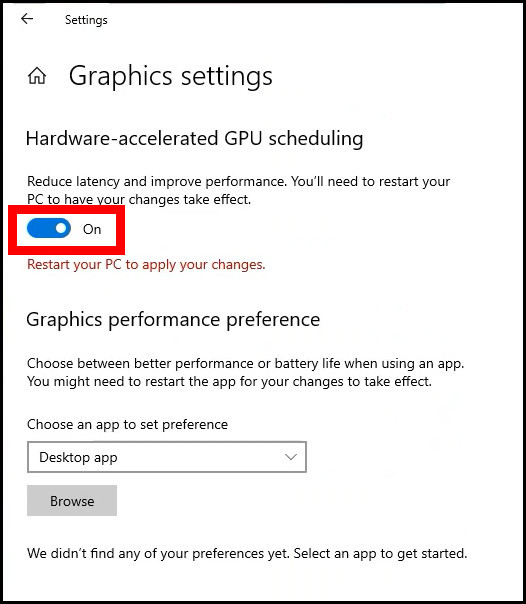
Now Windows will use the GPU for scheduling the graphics-heavy tasks. Let’s look at where you can enable this on Windows 11.
Go through our epic guide on how much does Overclocking increase FPS?
On Windows 11
- Press Windows + I to open Settings. Or, go to the Start Menu and click on the Settings shortcut.
- Click on System.
- Now navigate to System > Display > Graphics.
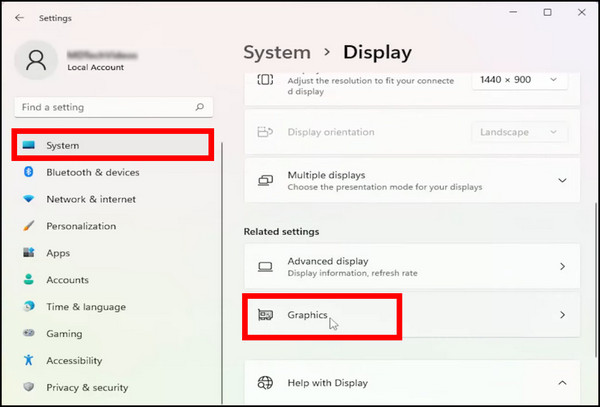
- Click on Change default graphics settings.
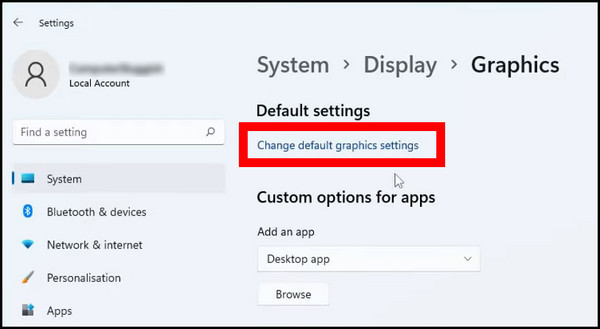
- Change the Hardware-accelerated GPU scheduling toggle to on.
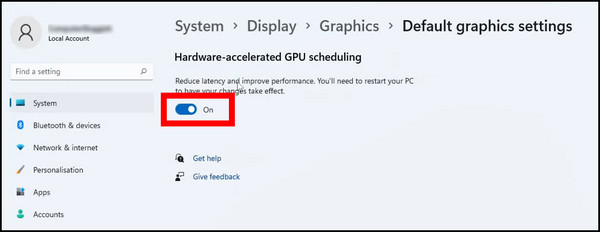
This will change the default scheduler for graphics workloads now.
Do check our latest post on the GPU Artifacting More and More but Temperatures Not Increasing
2. Use Registry Editor
Like many other settings, you can enable the hardware-based GPU scheduler from the Registry editor too. If you have past experience dabbling with registry settings, this should not be hard for you.
But if you are not comfortable using this route, the earlier method will be much easier for you.
These steps will enable Hardware Accelerated GPU Scheduling using the Registry Editor:
- Press Win + R, type regedit, and press Ok.
- Now navigate to Computer > HKEY_LOCAL_MACHINE > SYSTEM > CurrentControlSet > Control > GraphicsDrivers.
- Double Click on HwSchMode and set the Value to 2. Ensure the Base is set to Hexadecimal.
- Press Ok to close the dialog box and exit the Registry Editor.
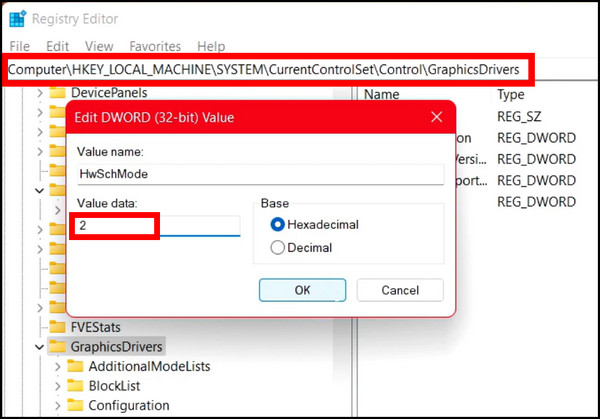
Your computer has successfully switched the default graphics scheduler.
Follow our guide to Disable Integrated Graphics.
Frequently Asked Questions
Should I enable hardware-accelerated GPU scheduling?
Hardware-based GPU acceleration aims to reduce CPU utilization and reduce latency in gaming. This is a mixed bag when it comes to improvements in gaming right now, but expect this feature to improve your frame rates in the future.
How do I enable hardware-accelerated GPU scheduling?
Open Settings and go into System > Display > Graphics > Change default graphics settings. Here, turn on the toggle next to GPU scheduling.
Conclusion
Some users have reported improved frame times while others reported decreased FPS with hardware-accelerated GPU scheduling. The older games particularly do not seem to play nice with this feature.
However, this is a bleeding-edge functionality right now, which means video drivers and game optimizations are required to utilize it completely. And if you are someone who installs nightly builds and beta GPU drivers, you can go ahead and enable it.
That’s all for today. See you in some other Windows guides.


